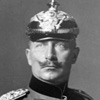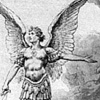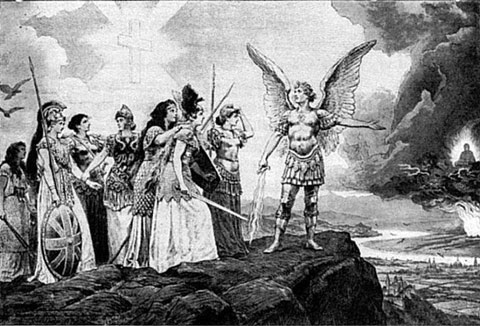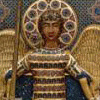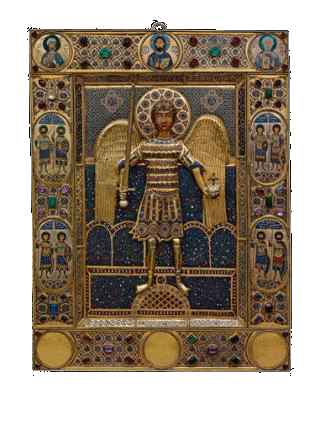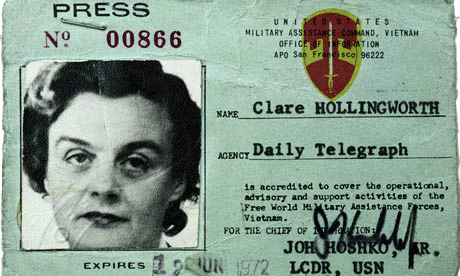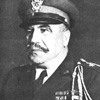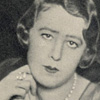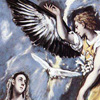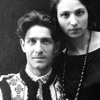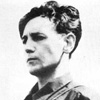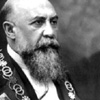|
|
|
Carmilla by J. Sheridan Le Fanu (1872) preceded Bram Stoker’s Dracula by 25 years and inspired the latter. My new project Carmilla places Le Fanu’s female vampire against the backdrop of historical conflict between the East and the West and finds the origin of the popular myth in racial and cultural fears that shaped our culture. Having come to the U.S. in 1980 and observed expressions of xenophobia during the “trade war with Japan,” I have focused on the East-West conflict as the subject matter of my work in performance, installation and film. While researching my performance piece Tokyo Rose (1993-95), I learned that the phrase “Yellow Peril” was first used by Kaiser Wilhelm II in 1895.[1] This made me realize that there is an older, deeper fear of “the Orient,” an abstraction that stretches from Vienna to Tokyo, and which represents everything the Occident is not. In the age of AIDS, the vampire has widely been accepted as a symbol of the Black Death, itself a result of Europe’s contact with its neighbors to the east and south. The fact that the modern vampires’ prototype is found in the folklore of the Balkans –– the geographical bridge between Asia and Europe –– led me to suspect that the “evil” had a human face after all. A meeting with a Transylvanian Saxon woman who was interned in a Soviet labor camp after WWII moved me to expand the definition of the East to include the Cold War period to the present. Le Fanu’s protagonist prefers same-sex victims and pursues them with erotic fervor. The lesbian overtones of Carmilla heightened the character’s alien nature to its Victorian readers. I chose to focus on Carmilla over Dracula because her gender and sexuality made her a personification of “The Other” the West defined itself against. The Orient of my Carmilla is dark and feminine, continuing my exploration of the history and evolution of negative female figures that symbolize age-old fears of the foreign –– of which Tokyo Rose was one, as was Yoko Ono, the subject of my film The Heart of No Place (2009), as “the woman who broke up the Beatles.” Black Death (bubonic plague) is now thought to have come from East Africa via Alexandria, devastating the 5th-century Roman Empire that had been ravaged by the Huns.[2] The Roman historians’ descriptions of them as “prodigiously ugly and bent” and “put men to flight by their terrifying appearances”[3] could have inspired the term Untermenschen coined by American eugenicist Lothrop Stoddard (1883-1950) as an antithesis to Nietzche’s “super-man”[4] and adopted by the Nazis to specifically mean the “horde from the East.” Eighth-century Muslim conquests effectively surrounded Europe, and gave rise to Europe's self-identification –– a Frankish chronicler coined the term Europenses to describe Charles Martel's army who fought the Andalusian Muslims.[5] By the 11th century, the Crusader fanaticism and hatred of the Other was such that they practiced cannibalism on the inhabitants of Ma’arra, present-day Syria (1098).[6] The Mongols followed; [7] Orders of knights formed during the Crusades continued to fight this new scourge, and the knights’ image as “protectors of Christendom,” merged with those of St. George and Archangel Michael, would resurface in the Kaiser’s vision of the “Yellow Peril.” Vlad III Dracul “the Impaler” (1431-1476) –– the model for Bram Stoker’s Count Dracula –– was the prince of Wallachia and a military hero who fought Mehmed II, the conqueror of Constantinople. His transformation to a bloodthirsty monster owes in part to Transylvanian Saxons who published luridly illustrated pamphlets about Vlad’s favorite method of execution.[8] In Stoker’s novel, Dracula travels in a coffin filled with Transylvanian soil. Blood and soil (blut und boden, “descent and homeland”), one of the main tenets of the Nazi ideology, was fetishized by the Romanian fascist party Legion of Archangel Michael (later the Iron Guard), who are said to have drunk each other’s blood and carried sacks of Romanian soil around their necks.[9][10] After founder Cornelieu Zelea Codreanu’s death in 1938, the Iron Guard marched with signs that read “Codreanu Present,”[11] and in 1940 exhumed his badly decomposed body for a grand funeral and reburial. Their allegiance to an undead leader calls to mind the vampire myth as well as the Christian belief in resurrection and life after death.[12] Their claiming of Archangel Michael as their patron saint aligns them with the medieval idea of a divinely enabled hero who would battle the evil dragon: Communists and Jews, regarded as enemies of the Romanian people.[13] In 1999, I visited Berlin artist Susken Rosenthal at her parents’ home near Stuttgart. Without this encounter, I would have set my story in Styria (Southern Austria) as is Le Fanu’s Carmilla. I learned that Rosenthal’s parents are Transylvanian Saxons (ethnic Germans), and that her mother had been deported to a Soviet labor camp at the end of WWII –– upon her release in 1947, the 5'8" woman weighed 83 lbs. According to author Robert D. Kaplan, it was part of a mass extermination plan that killed 50% of deportees.[14] [15] These Saxons had come to Transylvania in the 1200s, and by the 20th century comprised the middle class in Transylvania, much like the Jews in the rest of Romania. The family had just visited her hometown of Sibiu; one of the photos from the trip was of a fortified church in which the whole village took refuge during Mongol then Turkish and Tatar raids well into the 18th century.[16] I am admittedly a casual observer, brought up outside of either
Christian or Muslim traditions. But to me there seems a lot of the East in
Eastern Europe: the arabesquelike patterns that adorn the interior of Matthias
Church in Budapest (named after Dracula’s contemporary, King Matthias of
Hungary) or the mournful tonalities of Bulgarian folk songs. These do not seem
to be souvenirs of hated conquerors but like distant memories that seep out of
the ground. On what might be a gradual merging between the East and the
West, an artificial line seems to have been imposed, by differences in
religion and ideology. It might be these elements of the Orient in the European
“self” that cause the dread, and they might have, under persistent threats of
invasion and conquest, manifested themselves as monsters. And how are we to
know that we are no longer under the spell of these same fears that gave birth
to the mythical monster? All one has to do is to observe the reactions of our
fellow citizens to the economic ascendancy of China, to the alleged "socialist" bent of
the Obama administration, or to the plan for a new
mosque at Ground Zero. –– Rika Ohara, Fall 2012 |
|
|
Notes: |
[1] “He had a revelation of Oriental hordes overwhelming Europe and made a sketch of his vision: a Buddha riding upon a dragon above ruined cities. The caption read: ‘Die Gelbe Gefahr! [yellow peril!]’ Several copies were made and presented to royal relatives all over Europe as well as every embassy in Berlin.” –– John Toland, The Rising Sun: The decline and fall of the Japanese Empire 1936-1945, 1970, Random House, p. 69
[2] William Rosen, Justinian’s
Flea: Plague, Empire, and the Birth of Europe, 2007, Viking, pp.194-197 [3] “The Huns, says Ammianus, were ‘so prodigiously ugly and bent that they might be taken for two-legged animals or the figures crudely carved from stumps, which are seen on the parapets of bridges… Jordanes develops the theme. They caused excessive panic, he says, by the terror of their faces; they put men to flight by their ‘terrifying appearance, which inspired fear because of its swarthiness, and they had, if I may call it so, a sort of shapeless lump, not a head.” –– E.A. Thompson, The Huns paperback edition, 1999, London: Blackwell Publishers Ltd., p.56 (originally published by Oxford University Press, 1948); also see The Original Untermenschen [4]The Revolt Against Civilization: The Menace of the Under-man, (pamphlet) 1922 [5] “In calling the victors at Poitiers ‘Europenses’ for the first time, Isidore Pacensis’ neologism introduced… a meta-category to replace the lost, lamented civitas romanum.” –– David Levering Lewis, God’s Crucible: Islam and the Making of Europe, 570 to 1215, 2008, New York: W. W. Norton & Company, p.172 [6] Amin Maalouf, The Crusades Through Arab Eyes, 1984, New York: Schocken Books, pp.38-39; also see The Cannibal of Ma'arrat [7] At the siege of Caffa in Crimea in 1346, the Mongol army of Jani Beg, (khan, r. 1342-1357) catapulted plague-infected corpses over the city wall. (Mark Wheelis, University of California at Davis, http://www.medscape.com; http://www.cdc.gov) [8] Raymond T. McNally and Radu Florescu, In Search of Dracula, 1972, New York: Galahad Books, pp.110-114 (illustrations: p.106 and p.116) [9] Robert D. Kaplan, Balkan Ghosts: A Journey Through History, 1993, New York: Vintage Books edition, (1994), xlvi [10] Radu Ioanid, The Sword of the Archangel: Fascist Ideology in Romania, trans. By Peter Heinegg, 1990, Columbia University Press, p.140 [11] Kaplan, p.96 [12] Having possibly served as a model for Nicolae Ceausescu’s aspirations to a personality cult, Codreanu today is again a popular figure, voted 22nd in a television poll for 100 greatest Romanians in 2006 (Wikipedia). Ceausescu himself placed 11th, above Vlad III “Tepes” Dracul at the 12th. [13] Ioanid, p.98, p.105, p.158 [14] Kaplan, p.172 [15] The number of the deportees is estimated as 27,000 by hungarianhistory.com; “approximately 30,000” by sibiweb.de and 26,000 according to geneologienetz.de. [16] “The last Turco-Tatar raid didn’t get as far as most of its predecessors, but it had taken place as recently as 1788; and in the vast period between 1241 and 1788, smaller raids by the Tatars and other marauding bands had been endemic.” –– Patrick Leigh Fermor, Between the Woods and the Water, 1986, New York Review Books, p.169 |

